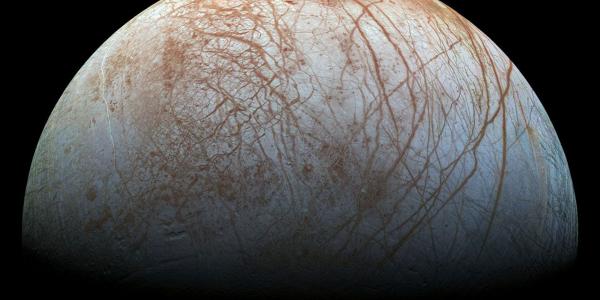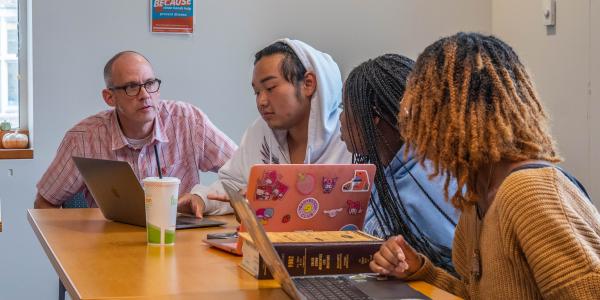A team from WashU successfully launched the DR-TES mission from NASA’s balloon launch facility in Fort Sumner, New Mexico on Tuesday, to test quantum X-ray and gamma-ray detectors in a space-like environment.

The DR-TES (Dilution Refrigerator Transition Edge Sensor) mission aims to test a sophisticated cooling system and a novel gamma-ray detector array in near-space conditions. The mini-dilution refrigerator is designed to cool detectors to a temperatures of 80 millikelvin, enabling the high-precision measurements required for cutting-edge X-ray and gamma-ray detection.
Henric Krawczynski, the Wilfred R. and Ann Lee Konneker Distinguished Professor in Physics in Arts & Sciences and fellow of the McDonnell Center for the Space Sciences (MCSS), leads the DR-TES mission with support from NASA and MCSS. The mission is a collaborative effort of WashU, the National Institute of Standards and Technology (NIST), the University of Colorado Boulder, and the University of New Hampshire. MCSS support ranged from funding the development of the mini-dilution refrigerator to providing helium on the launch pad.
The WashU team is composed of staff members Dana Braun, Garry Simburger, Richard Bose, and Matthew Fritts; postdoctoral researcher Kun Hu; and graduate students Ephraim Gau, Sohee Chun, Nicole Rodriguez Cavero, Argen Detoito, Hamta Farrokhi, and Shravan Vengalil Menon. The team traveled to New Mexico in mid-August to begin assembling the DR-TES payload.
The mission employs innovative quantum sensors to detect X-rays and gamma-rays with unprecedented detection efficiencies and energy resolutions. These novel detector arrays were developed at NIST-Boulder, and the University of Colorado Boulder, utilizing NIST’s advanced detector fabrication facilities. The sensors use advanced quantum technologies like Superconducting Quantum Interference Devices (SQUIDs) enabling the microwave readout of many detectors with a single microwave cable, significantly enhancing the system's capability.
A key component of the DR-TES payload is the SLEDGEHAMMER microcalorimeter. This advanced detector features Transition Edge Sensors (TES) linked to SQUIDs and microwave resonators. This technology is set to revolutionize our ability to detect and analyze high-energy cosmic phenomena. The use of quantum sensors aligns with WashU's commitment to advancing quantum sensor technology through the Center for Quantum Leaps.

The successful launch at 9:43am CDT on Tuesday, September 24, 2024 marked a significant milestone for the mission. DR-TES reached a float altitude of around 131,000 feet and flew for a total of 9 hours and 52 minutes, according to NASA. The balloon and payload are safely on the ground and recovery efforts are underway. This mission serves as a pathfinder for future larger-scale explorations, potentially offering significant insights into phenomena such as gamma ray emissions from supernova remnants and the enigmatic 511 keV emission from the galactic center, which may be linked to dark matter.
"The mini-Dilution Refrigerator cooled the detectors to the required temperature, and the detectors recorded X-rays as planned. This was a successful technology demonstration flight which will enable future missions to acquire 3-dimensional images of recently exploded stars, telling us details about the extreme physical processes that make the explosions happen," said Krawczynski. "This mission using next-generation technology became possible by combining the strengths of the mission design and implementation capabilities of the Washington University team and the University of New Hampshire team led by former WashU postdoctoral research associate Fabian Kislat with the advanced quantum sensing technologies developed at NIST and by Dan Becker and his team at the University of Colorado Boulder.”

The launch was part of NASA's annual fall balloon campaign, organized by the agency’s Columbia Scientific Balloon Facility (CSBF). This year’s campaign features eight scheduled balloon flights, each carrying cutting-edge scientific experiments and technology demonstrations, with launches scheduled from mid-August through mid-October. The launch and tracking services provided by CSBF are crucial for these high-altitude research endeavors, including previous missions like XL-Calibur, which launched from Sweden in July.
WashU has a long and distinguished history in scientific ballooning, significantly advancing research in astrophysics and space sciences. The DR-TES mission exemplifies NASA's Balloon Program's role in advancing scientific frontiers, offering seasoned researchers and young scientists invaluable opportunities to test and refine state-of-the-art technologies in real-world conditions. This mission underscores WashU's commitment to pioneering scientific research and technological innovation.





